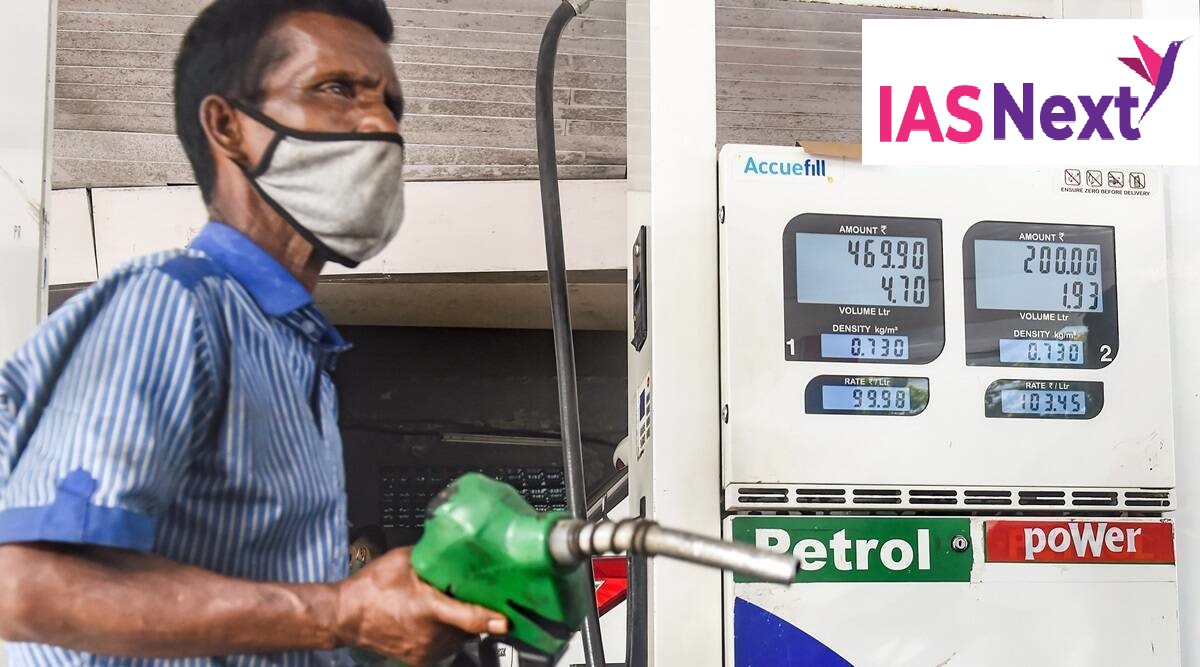CURRENT AFFAIRS
Get the most updated and recent current affair content on Padhaikaro.com
Economics of Oil Bonds
- IAS NEXT, Lucknow
- 18, Apr 2022

Reference News:-
Over the last one year, as retail prices of petrol, diesel and other petroleum products have surged there is mounting pressure on government to reduce taxes.
- As of now, taxes account for 50% of the total retail price for a litre of petrol, and 44% for a litre of diesel.
- Union Government has sought to counter such criticism by claiming that the current government cannot bring down taxes (and, as a consequence, prices) because it has to pay for the oil bonds issued by the previous government.
What are oil bonds? Why were they issued?
- When fuel prices were too high for domestic consumers, governments in the past often asked oil marketing companies (OMCs) to avoid charging consumers the full price.
- But if oil companies don’t get paid, they would become unprofitable. To address this, the government said it would pay the difference.
- But again, if the government paid that amount in cash, it would have been pointless, because then the government would have had to tax the same people to collect the money to pay the OMCs.
- This is where oil bonds come in. An oil bond is a promissory note issued by the government to the OMCs, in lieu of cash that the government would have given them so that these companies don’t charge the public the full price of fuel.
- An oil bond says the government will pay the oil marketing company the sum of, say, Rs 1,000 crore in 10 years. And to compensate the OMC for not having this money straightaway, the government will pay it, say, 8% (or Rs 80 crore) each year until the bond matures.
- By issuing such bonds, a government can defer the full payment by 5 or 10 or 20 years, and in the interim just pay the interest costs.
- Therefore, through Oil Bonds the government of the day is able to protect/ subsidise the consumers without either ruining the profitability of the OMC or running a huge budget deficit itself.
- Oil bonds were issued by several governments in the past.
Is the UPA-era oil bonds large that is constraining current government?
- In 2014, there were bonds worth Rs 1.34 lakh crore that had to be paid between 2015 and 2026.
- Between 2014 and 2022, the BJP government has had to spend a total of Rs 93,686 crore towards interest as well as the principal.
- There are three ways to answer the question as to whether the amount is large enough to restrict a reduction in taxes.
- The first is to observe that total payout was just 7% of the total revenues in 2014-15. As the years progressed, this percentage has come down because taxes generated from this sector have soared.
- The second is to look at the total revenue earned by the government (both Centre and states) between 2014 and 2022 from taxing petroleum products. This amount is more than Rs 43 lakh crore and the total payout was just 2.2% of it.
- The third way is to note that the total amount of revenue earned by the Centre from just one kind of tax— excise tax — in just — 2014-15 — was more than Rs 99, 000 crore.
- In other words, while the NDA government has had to pay for oil bonds, the payout is not big compared to revenues earned in this sector.
Still, isn’t it a bad idea to issue such bonds?
- Former PM Manmohan Singh noted that issuing bonds just pushed the liability to a future generation.
- But to a great extent, most of the government’s borrowing is in the form of bonds.
- Further, in a relatively poor country like India, all governments are forced to resort to the use of bonds of some kind.
- Even the current NDA government has issued bonds worth Rs 2.79 lakh crore (twice the amount of oil bonds) to recapitalise public sector banks. These bonds will be paid by governments till 2036.